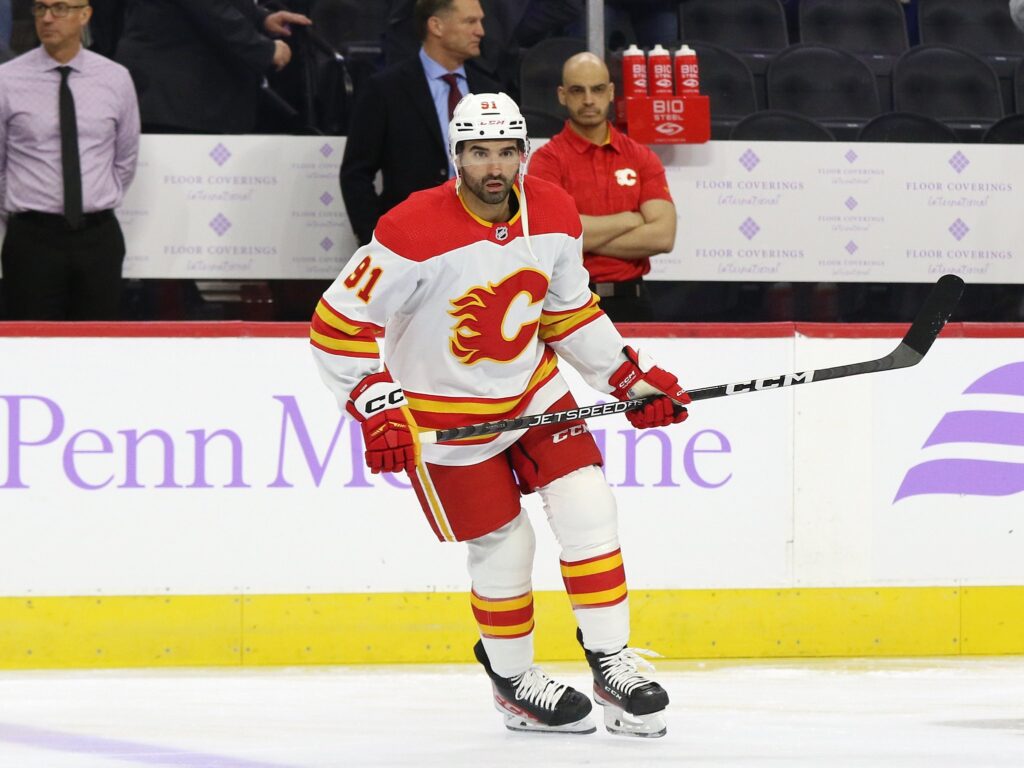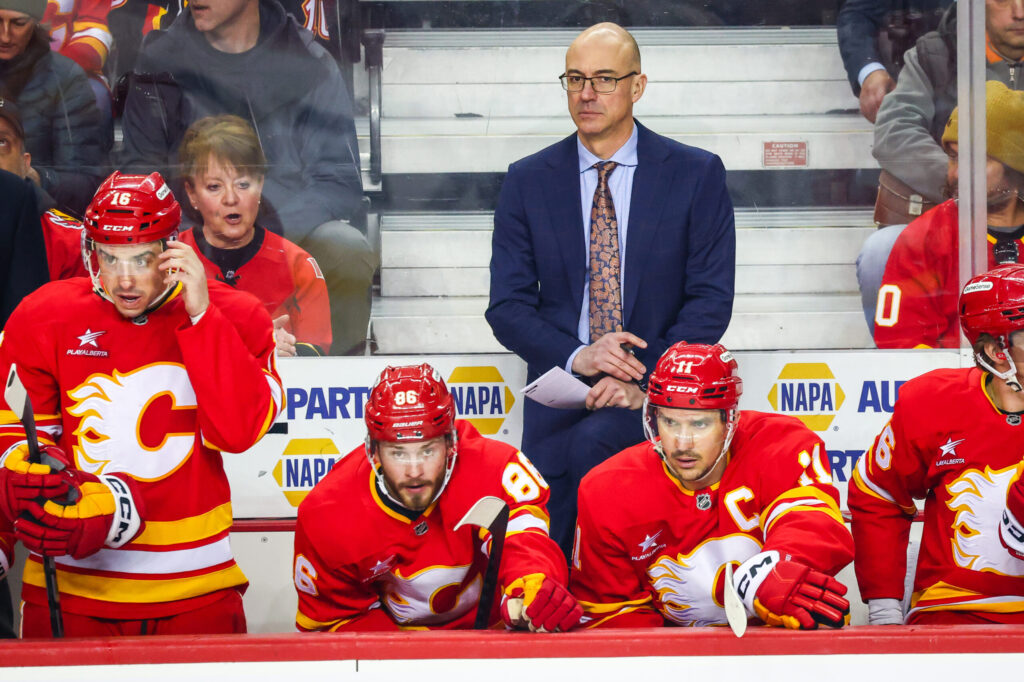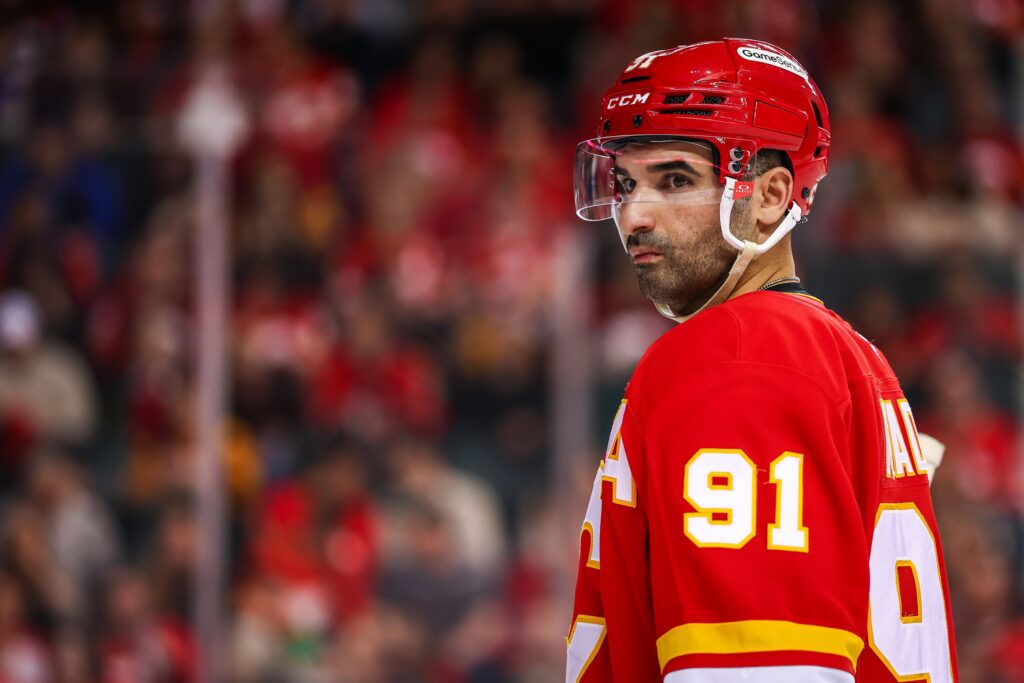In the NHL, bad starts force hard questions. For the Calgary Flames, currently languishing in last place, those questions are becoming existential. When a team built to compete finds itself at the bottom of the standings this early, the focus inevitably shifts from the ice to the executive suites. General Manager Craig Conroy is facing the unenviable task of evaluating a roster that isn’t working, and all indications are that major changes are being considered.
At the center of that speculation is veteran center Nazem Kadri. He’s a productive, high-profile player on a long-term, big-money deal. Typically, such players are the most difficult to move. However, a recent revelation regarding his contract has fundamentally altered the trade landscape, turning what was once a long-shot discussion into a very real possibility.
Previously on the EDGE – Calgary Flames at a Crossroads: Navigating a Season of Contradictions
The Clause That Changes the Game
For months, the prevailing assumption around the league was that Kadri was effectively locked in Calgary. It was widely believed his contract included a full No-Movement Clause (NMC) that would extend deep into his seven-year deal, giving him complete control over his destination.
That assumption was incorrect.

According to reports from Sportsnet’s Elliotte Friedman, Kadri’s full NMC was only for the initial years of his contract. As of this 2025-26 season, that protection has transitioned to a modified 13-team no-trade list (M-NTC). This clause remains in effect for this season and the final three years of his deal.
This distinction is not minor; it’s a seismic shift. The news has reportedly sent “shockwaves” through NHL front offices. Instead of Kadri holding a veto over all 31 other teams, he can now only block a move to 13 specified organizations. This leaves roughly 60% of the league—approximately 18 teams—as potential trade partners for Conroy.
For a GM looking for options, this development makes moving Kadri “a whole lot easier.” The phone lines, which may have been cold, are now open for business.
The $7 Million Conundrum: Asset vs. Albatross
With the feasibility of a trade established, the conversation shifts to desirability. Any potential acquiring team is weighing the significant upside of Kadri’s game against the heavy burden of his contract.
Let’s look at the asset side of the ledger. Kadri, who recently turned 35, remains a premier offensive contributor. Last season, he led the Flames with 35 goals and 67 points. This year, despite the team’s abysmal start, he is once again leading the squad in scoring with seven points through 10 games. Head coach Ryan Huska recently noted that Kadri is known for starting slow before he gets “hot and rolling,” suggesting his best hockey is still ahead this season.

More importantly, he is a battle-tested, top-six center with a Stanley Cup ring (won with Colorado in 2022). Contending teams are perpetually “itching” for center depth, and Kadri fits that description perfectly. He brings playoff pedigree and a proven ability to produce.
Now, the liability. Kadri carries a $7 million average annual value (AAV) that runs through the 2028-29 season. Taking on that full cap hit for four more seasons for a player in his mid-to-late 30s is a significant financial commitment that few, if any, contenders can afford.
This financial reality dictates the mechanics of any potential deal.
Mechanics of a Blockbuster: Retention and Return
Because of the contract’s length and AAV, any serious trade discussion will almost certainly involve Calgary retaining salary. The maximum allowable retention is 50%, which would bring Kadri’s cap hit down to $3.5 million.
While far more palatable, a $3.5 million cap hit through 2028-29 is still a long-term commitment for an acquiring team to make. Consequently, the return for Calgary would be tempered. Flames fans hoping for a haul of first-round picks and ‘A’-level prospects will likely be disappointed.
Given the contract, the expected return for Kadri, even with retention, would likely center around mid-level prospects and conditional draft picks. The primary goal for Calgary in this scenario isn’t just asset acquisition; it’s also about gaining future financial flexibility.
Mapping the Suitors: Who Is Kicking Tires?
With a 13-team NTC, Kadri still holds considerable power, but a wide market remains. Reports indicate a number of clubs are monitoring the situation, including the Boston Bruins, Nashville Predators, and the Utah Mammoth.
However, a few teams have been identified as particularly strong fits:
- The Carolina Hurricanes: The Canes are reportedly “a second-line centre away from looking like the team to beat for the Stanley Cup.” They have championship aspirations now and a clear need that Kadri fills. Reports suggest they have already reached out to Calgary to gauge availability.
- The Montreal Canadiens: The Canadiens are in a different position, looking to accelerate their rebuild. Adding a veteran presence like Kadri could be the move that propels them into their competitive window, providing leadership and secondary scoring to support their young core.
- The Vancouver Canucks: League executives have reportedly identified the Canucks as an “ideal fit.” Vancouver has been searching for a reliable No. 2 center to slot in behind Elias Pettersson. A hypothetical trade package involving 2023 first-round pick Tom Willander has even been suggested as a scenario that could “make sense” for the Flames’ rebuilding ambitions.
Previously on the EDGE – Matvei Gridin’s Preseason Puts the Calgary Flames in a Bind
The Impending Pause: A Milestone Looms
While the speculation is intense and the new contract details make a trade plausible, do not expect an imminent announcement. There is a significant, short-term obstacle delaying any potential deal: a personal milestone.
Kadri is just five games shy of playing his 1,000th career NHL game.
According to Friedman, there is “zero chance” he will be traded before hitting this mark. The milestone is a “huge deal to him, his family and the Flames” organization. It is a moment of personal triumph and organizational respect that will not be interrupted by a trade.
Assuming he stays healthy, Kadri is projected to hit this 1,000-game achievement at home against the Columbus Blue Jackets on Nov. 5. Until that game is in the books, all trade talk is effectively on hold.
The View from the Man Himself
For his part, Kadri is a professional. Having already been through one of the most high-profile trades in recent memory—the 2019 blockbuster that sent him from Toronto to Colorado—the current media swell is familiar territory.
He recently told Sportsnet’s Eric Francis that the trade speculation is “nothing that draws my attention” and that his sole focus is on helping the Flames win hockey games. He noted that he has experienced far more difficult situations than this.
His focus may be on the ice, but for the Flames’ front office, the focus is clearly on the future. The Flames are a team in desperate need of a new direction. The revelation of Kadri’s modified no-trade clause has provided Conroy with a powerful, unexpected tool to chart that new course.
The phones are likely quiet for the next week out of respect for game 1,000. But come Nov. 6, expect them to start ringing.
Created with the aid of Gemini AI
